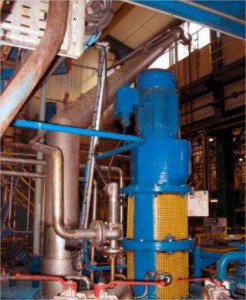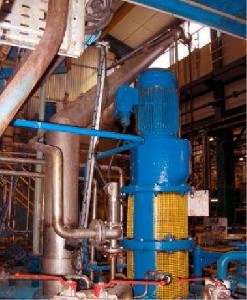At a chemical facility, a recently replaced graphite safety disc (nominal diam.: 250) calibrated at 3 bar broke on a 12-m³ reactor used to solubilize a Resol resin. This intermediate resinous agent, included in production activities for the hide tanning industry as well as in Bakelite manufacturing, was derived by: sulfonation of phenol with sulphuric acid, neutralisation with soda lye, and condensation with formaldehyde.
This solubilization step began on 3rd March and lasted 16 hours; the reactor, loaded at 2 pm (with 30% soda lye, sodium bisulphite and formaldehyde), started heating at 2:40 pm until reaching 125°C (3 bar of steam). After turning off the heat, the exothermic reaction drove the temperature up to 137°C. The technician tracked this value on a local thermometer and remained on-call to restore steam heating as needed. Samples were extracted every 2 hours (for a salt content) in order to monitor progress of the reaction. The measured index values matched predictions through 4:30 the next morning, i.e. 12 hours after initiating the solubilization process. Upon resuming his shift at 4:15 am, the technician recorded a temperature of 140°C and pressure lying between 2.4 and 2.6 bar. The salt content value at 4:30 had been constant for 2 hours. To maintain pressure at 2.5 bar, the reactor was heated with a small amount of steam around 5 am. The pressure oscillated from 2.4 to 2.6 bar and the temperature read 139°C when the disc broke at 5:40; 5,000 litres of reaction mix spilled outside falling onto 200 m² of the reserved warehouse zone. Fire-fighters equipped with self-breathing units first spread neutralising agents and absorbents, then a subcontractor collected the residue and cleaned the ground. The operator issued a press release.
An appraisal confirmed the hypothesis of a disc calibrated at a value too close to the reactor operating pressure (3 bar, tolerance: +/-10%; fatigue coefficient: 0.85; temperature: 140°C, thus favouring a lower bursting pressure). The installation was modified: high pressure alarm set with a threshold at 3 bar, exhaust valve calibrated at 3.5 bar, rupture disc calibrated at 4 bar for 140°C, rupture disc exhaust pipe rerouted to an airtight and little-used zone. The definition and design calculations of safety devices were revised. Operating protocols were updated (T and P indicated on the existing tracking sheet). The other safety measures applied onsite were catalogued and verified, as were the exhaust collection and associated discharge points.
Download the detailed report in .pdf format (134 Kb)





